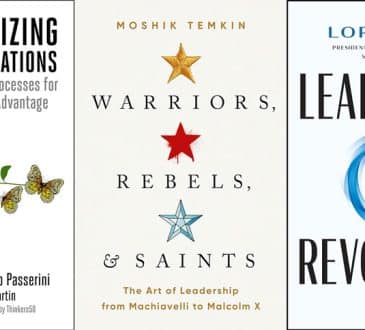Surprising Advantages to Being an Underdog

As humans, our love for the underdog is a primal evolutionary trigger. It’s a mix of our competitive natures and our sense of fairness that stems from an innate notion that it’s unfair to pick on someone smaller.
While being small can have big disadvantages when it comes to things like manpower and cash flow, at the same time it can also be a huge advantage when it comes to creating extraordinary brand distinction.
Look at the soft drink industry. You’d think that in 120 years, Coca-Cola would have had enough money, media, and leadership to wipe Pepsi, Dr. Pepper and other off the map. Coke is the biggest brand in the world. And yet, they haven’t been able to do it. Not even close.
Old or new, large or small, underdogs find a way to survive. It’s part of their nature. And in way more instances than you might think, challenger brands find a way to win. That’s because there are several surprising advantages to being an underdog. For example:
- Everyone pulls for the challenger.
Smart challengers understand that the masses are rooting for them to succeed and they leverage that by giving consumers an emotional reason to connect. - Competitors underestimate challengers.
Call it overconfidence, misinformation, or hubris on the part of those at the top of the food chain, but one of the great advantages to being an underdog is that category leaders almost always underestimate the passion and drive of challengers biting at their heels. - It’s easier for challengers to fly under the radar.
Brands like Airbnb, Uber and Camp Gladiator were huge underdogs able to crack their way into some of the most competitive and expansive categories out there. They won by doing things so completely differently from their competitors that no one paid any attention. - Challengers can be more nimble.
Often, the larger the organization, the more difficult it is to maneuver — more offices, more people, more management layers, more planning, and more time. By contrast, the smaller underdog brand can assemble everyone in one room stocked with Blue Moons and Rolos. - It’s easier for challengers to build, adapt, and maintain their cultures.
Building and maintaining an authentic, inclusive, sustainable culture is crucial to the success of a brand. Apple, Pixar, Chick-fil-A, and Whole Foods are four of the biggest disruptors in history and each has a culture that’s envied by companies everywhere. They didn’t build the company and then the culture. It was there at the beginning. - Challengers remember how to hustle.
Because challenger brands don’t have the budgets or resources that category leaders do, they’re forced to achieve more with less — with smarter strategies and better creative work, and making the most of the resources at hand. - Challengers can go where big brands can’t or won’t.
Big companies tend to be safe, stodgy, and sedentary. Those rationales open the door for underdogs who are willing to take a chance. Think Apple leaning into home computing when IBM wouldn’t. Or Netflix sending DVDs through the mail with no late fees and putting Blockbuster out of business. - Challengers attract talent who want to make a difference.
The talent who are drawn to challenger brands are all about questioning the status quo, thinking differently, and changing the world. The disruptive upstart company looking for innovative thinking has more appeal than the established leader who’s fine doing things the way they’re been done before. - Challengers have a “change the game” mindset.
Challengers find a way to break the mold. They expose weaknesses in category norms and offer alternatives that often appear obvious with the perfect vision of hindsight. For example, in 2007 Charles Shaw winemaker Fred Franzia created a distinctive competitive advantage with his “Two Buck Chuck” Chardonnay by focusing on stridently pragmatic operations that allowed him to charge substantially less for a quality bottle of wine. - For challengers, time is of the essence.
When you lack unlimited resources, you can’t afford to sit around and take your time. Category leaders are big, well-compensated, and have the resources to wait you out, buy you out, or smoke you out. When you’re the underdog, it’s always “Go Time!” And while that may tend to amp you up a bit, make no mistake — a real sense of urgency can be a big advantage.
The key for challengers is to understand what advantages they have that they can leverage for success. When challengers understand their advantages and are willing to do what it takes to create a genuine distinction, they’re awfully hard to beat.
Written by Mike Sullivan and Michael Tuggle.
Add CEOWORLD magazine to your Google News feed.
Follow CEOWORLD magazine headlines on: Google News, LinkedIn, Twitter, and Facebook.
This report/news/ranking/statistics has been prepared only for general guidance on matters of interest and does not constitute professional advice. You should not act upon the information contained in this publication without obtaining specific professional advice. No representation or warranty (express or implied) is given as to the accuracy or completeness of the information contained in this publication, and, to the extent permitted by law, CEOWORLD magazine does not accept or assume any liability, responsibility or duty of care for any consequences of you or anyone else acting, or refraining to act, in reliance on the information contained in this publication or for any decision based on it.
Copyright 2024 The CEOWORLD magazine. All rights reserved. This material (and any extract from it) must not be copied, redistributed or placed on any website, without CEOWORLD magazine' prior written consent. For media queries, please contact: info@ceoworld.biz
SUBSCRIBE NEWSLETTER








